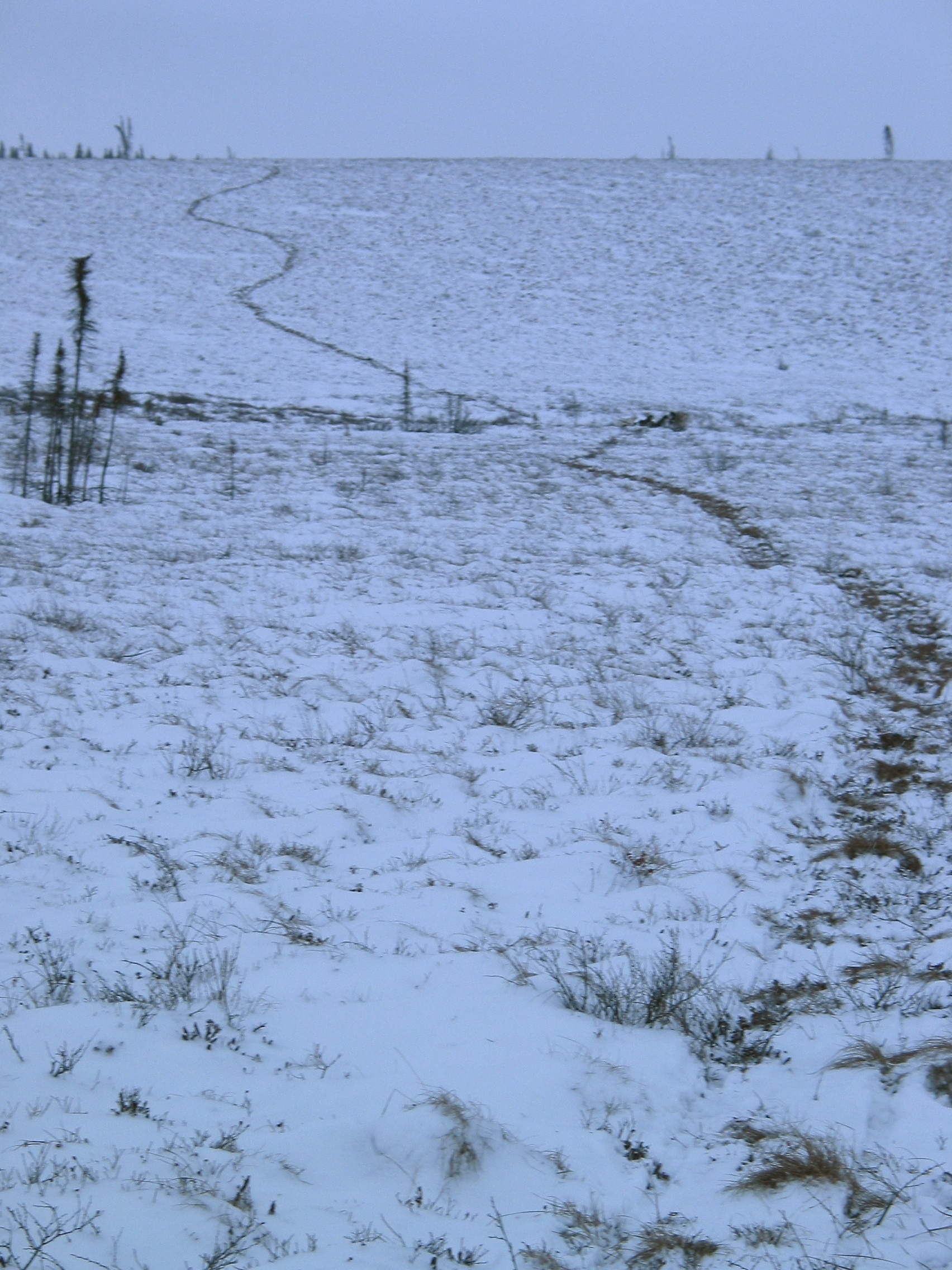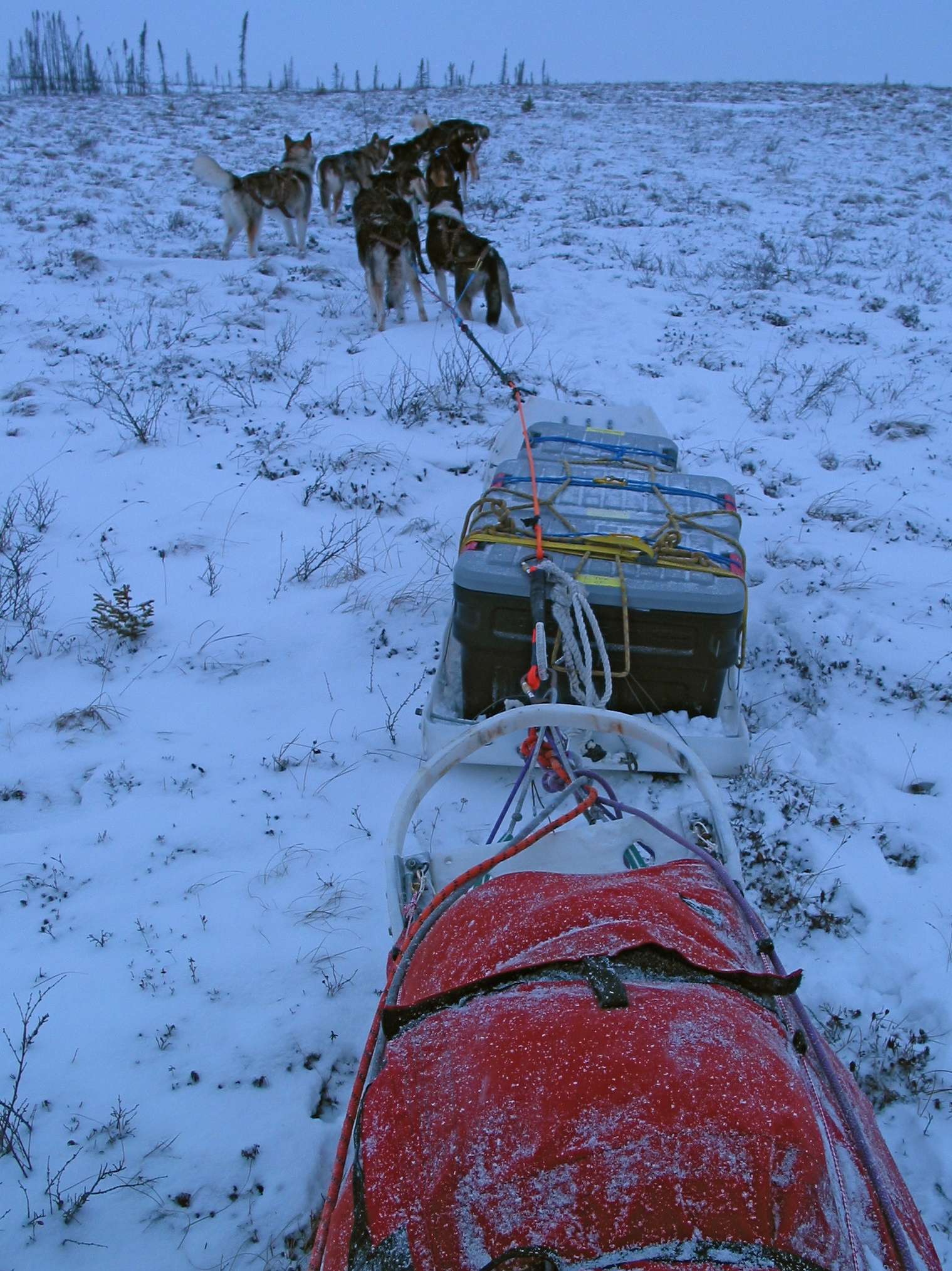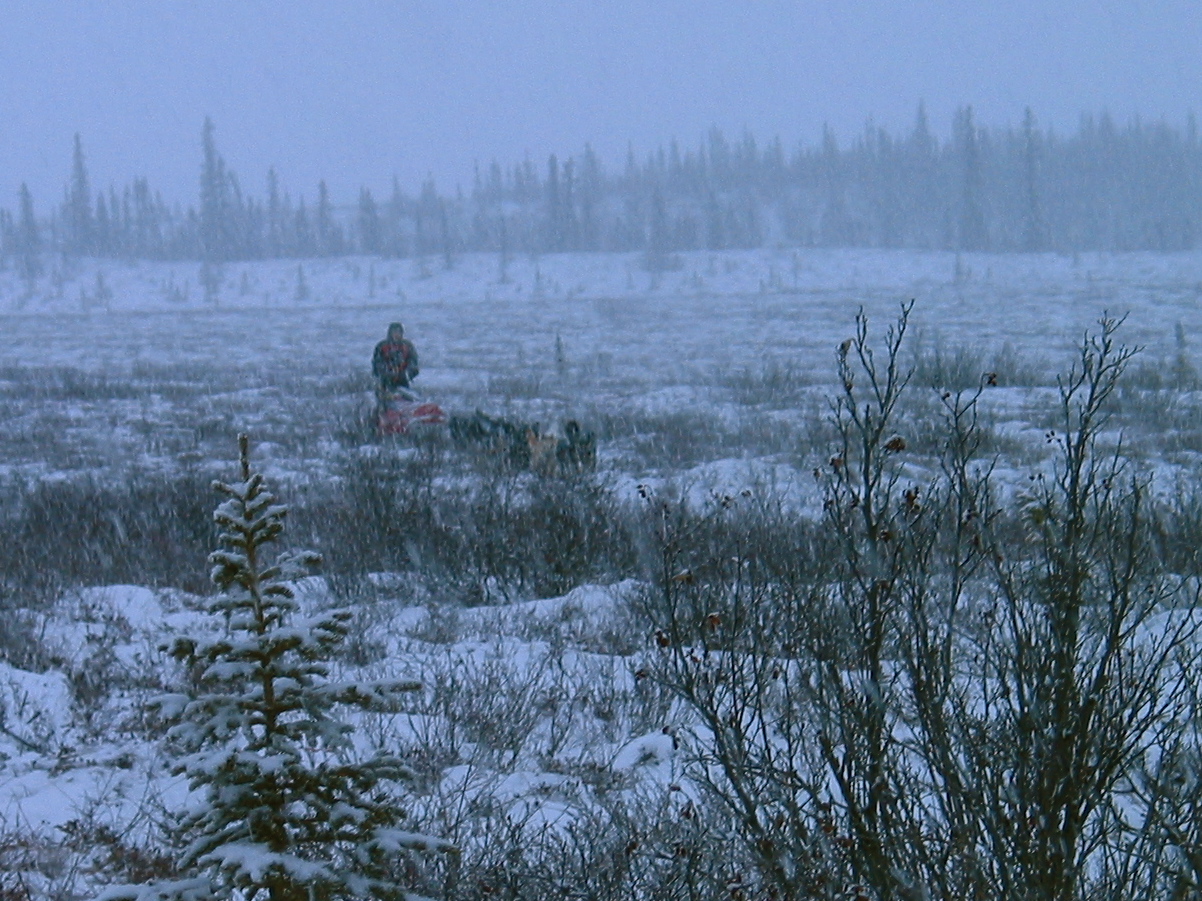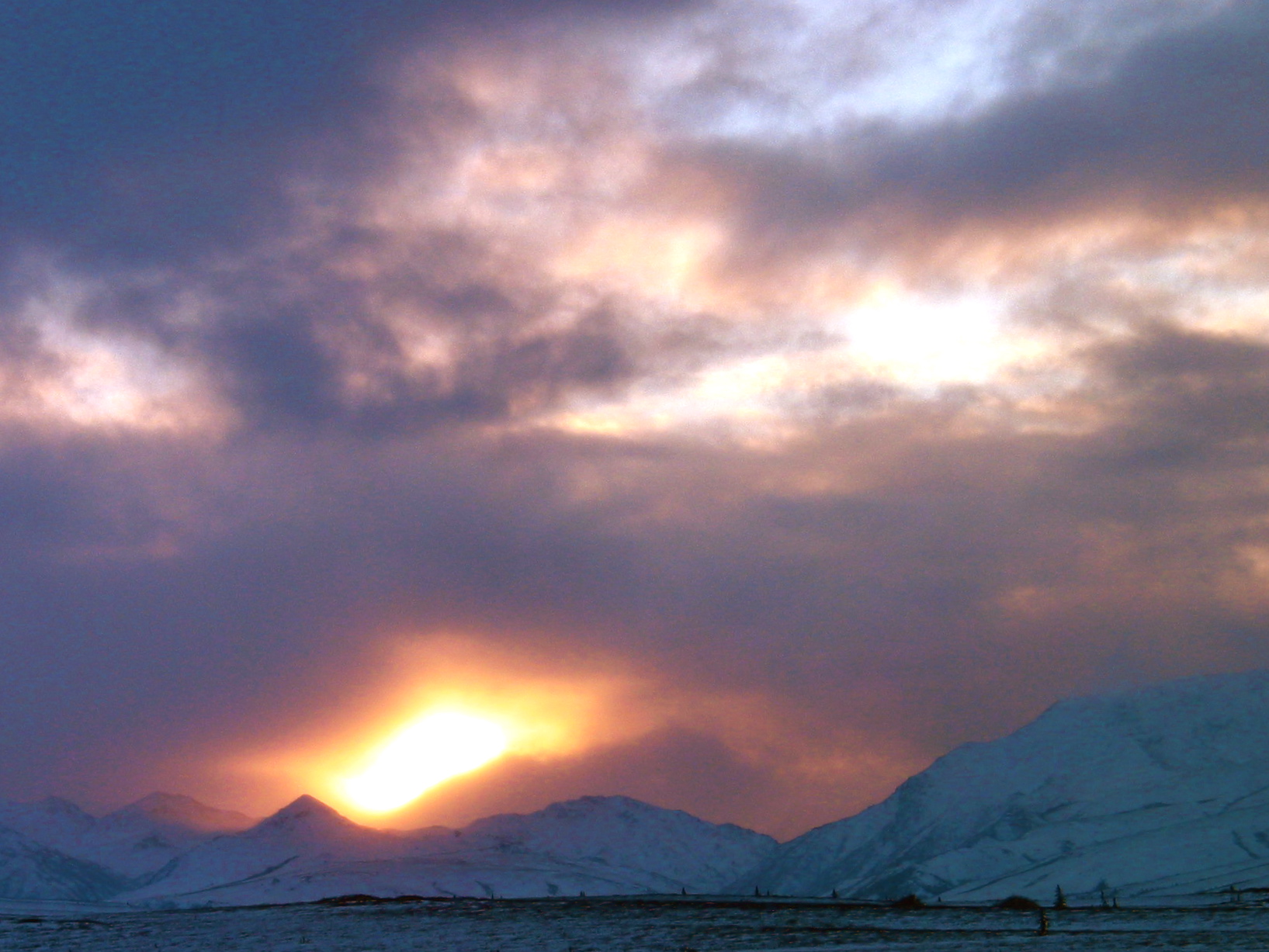Whoever said that change is the only constant in the universe must have spent some time traveling in Alaska in winter. Though people often dream of Alaska as the land of winter and endless snow, the reality here in the interior of the state can be a bit different. I often think we live in the land of feast or famine when it comes to snow conditions. On our most recent patrol to the north boundary of the park I was reminded of this once again.
December was a very snowy month by our standards. Our first day on the trail we were graced with smooth gliding sleds on well packed snow trails that many other folks had traveled this season. The second day we were the first to travel the trail this season. The outline of where it should be was often visible as a white line between the brush and it was easy enough to retrace the route of many years before. However, the wide open tundra gives limitless options for where to travel so there is no real "trail" to follow. We just pack in a layer of snow and hope that we can continue to retrace it throughout the season. The more we can travel the same exact snow line the better our travel will be as we continue to pack a little more snow onto our "trail" each time we pass. This is also crucial because just as frequently as we have snow we also get impressive winds. The winds can take our snow and redistribute it in the most amazing ways, leaving some places totally bare while others are absolutely buried.
As our faint outline of a trail disappeared into the tundra it was up to us to choose the best route possible. I went ahead of the dog teams on skis and armed with a GPS which held last year's averaged route. I set a meandering path as I balanced the line on the GPS with the reality of the landscape and conditions in front of me. The dogs happily followed and eventually passed in front of me setting their own sinuous line.
The next day was a whole new day. While we had been graced with reasonable snow coverage on the first two days, the third day was a different story. We crossed a section of tundra that seems to always be more windblown than anywhere else. This time Jason was ahead on skis scouting the route and Matt and I got the message on our radios to, "Beware of tundra tussocks exposed on the far side of the hill [we were climbing]". As we crested the top I could see he wasn't kidding. Driving a dog team down hill through huge tussocks with no snow to fill the gaps in between is a difficult undertaking. You have to keep the dogs traveling very slowly so no one twists a wrist or a shoulder in between the large grassy clumps. You have to ride the drag brake gently, the metal claw brake is simply not a safe option in tussocks, and you must constantly shift and shuffle your weight as the sled bounces and careens unpredictably from one bump to the next. We bounced our way down and up and across and over the bare tundra for a while wondering to where all of its snow had been blown.

The quiet snows and steady winds continued through the night. The next day I left before the dog teams in the early morning darkness once again on skis to retrace our route back to our cabin from the first night. By the light of my headlamp and with snowflakes still gently swirling I tried to re-find the deep tracks the dogsleds had left less than 24 hours before. They were gone. Windblown snow filled it all in and made it seem as if we had never passed through there before - at least to human eyes. They dogs that followed me a few hours later were able to smell, feel, and otherwise intuit where our trail had been and alternated between following their old trail and my new ski tracks depending on which route made more sense to them in the moment. The dog teams eventually passed me again. Even though they were only a few minutes ahead the wind was erasing their tracks before I could follow them. I spent my day staring at the tundra for the faintest outline of a runner edge or brake line. Feeling the trail when the snow is windblown and hardpacked can be hard to do- both have a hard crust on top. Fortunately even humans can sometimes feel the difference between the packed snow of the trail and the soft deep snow off the trail. We all reached our cabin after a full day of travel. We were grateful for more snow packed onto the path that will hopefully remain as a white ribbon of snow for us to follow even if the rest of the fresh snow blows away with the next winds.
During our final night the temperatures plummeted from well above zero to about fifteen below zero. This affects the consistency of the snow. Sleds glide easily across "wet" snow in temperatures above zero. When temperatures cool down the snow loses a lot of moisture and becomes dry and more like the consistency of sandpaper. This unfortunate friction on the sled runners and can also be really tough on dogs' feet. As we traveled out toward home on Christmas Eve we were faced with very different conditions than our easy run in. We had to put booties on many of the dogs' feet to protect them from the snow and ice balls that were forming between their toes caused by the fresh, cold, dry snow. The sleds dragged slowly feeling the resistance of the changed snow crystals. Even mushers move slower in the cold as we have to wear more layers, spend more time rewarming our fingers after performing chores, putting on booties, doing anything. Eventually we reached the dog truck in the early evening light, thankful that we would be sleeping soundly where sugarplums could dance in our heads.
Another patrol complete and we are reminded that there is no such thing as a standard patrol or standard conditions to expect. Denali is true to its wilderness character. Many summer visitors to the park are challenged to find their own route while traveling in the backcountry because the park does not have trails. We don't have trails in winter either. The route that is packed by dog teams one day may or may not remain on the next. Every winter we start fresh.
Part of the wilderness experience is learning to truly pay attention to the landscape and where you are in it. There is a certain satisfaction to finding a route that works and gets you safely where you want to be. There is a deep connection to a place when you observe it so closely that you can remember a specific tree that your route bends around or you memorize exactly how many small creek drainages you cross along the way. Remembering that we are a part of this landscape is a gift. Learning to truly pay attention to subtle details in a world where we are often so rapidly offered information, directions, and advice is a gift. Remembering that each day is a new and unique adventure is a gift. Denali and the dogs offer us these gifts daily.



